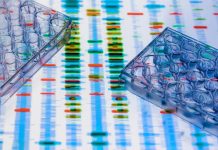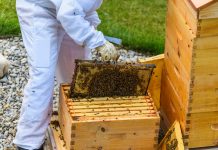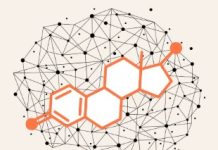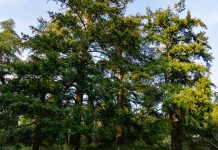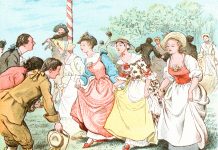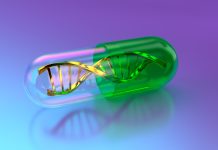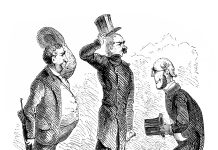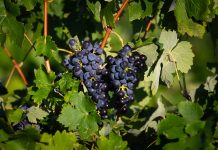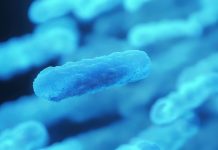Open Access Government produces compelling and informative news, publications, eBooks, and academic research articles for the public and private sector looking at health, diseases & conditions, workplace, research & innovation, digital transformation, government policy, environment, agriculture, energy, transport and more.
The building block of reality: Information
A deep exploration of how entropy, information theory, quantum mechanics, and emergent gravity reshape our understanding of reality—from Carnot and Boltzmann to black holes, holography, and Erik Verlinde's information-based universe.
Single chromosome sequencing in human cancers
In this review, Brian Tait, Chief Scientific Officer, Haplomic Technologies Pty Ltd, examines critical aspects of cancer genetic research, emphasizing genes that may benefit from single-chromosome sequencing to enhance allele identification accuracy, and discussing the implications of single nucleotide polymorphisms (SNPs) in the molecular development of human cancers
Economics matters in carbon removal: High-preforming carbon removal technologies delivering true long-term value creation
As the urgency to achieve net-zero intensifies, capital allocation toward carbon removal technologies is becoming more selective, competitive, and performance-driven. This whitepaper presents a rigorous comparative analysis of Direct Air Capture with Carbon Storage (DACCS) technologies, with a focus on economic viability, system resilience, and long-term value creation (LTVC).
Climate-proofing public procurement: Mainstreaming tailored climate information into every stage of the process
Cities are central to both the causes and solutions of the climate crisis. Local governments, through their regulatory and spending powers, hold significant potential to advance climate neutrality. Integrating climate considerations into public procurement can transform it from a procedural necessity into a strategic instrument for mitigation, adaptation, and sustainable urban development.
Cold water storage tank inspection – are you prepared?
As water temperatures rise in spring and summer, so does Legionella risk. Learn how to assess and reduce the dangers of warmer cold water in your systems.
Governance, collaboration, and advocacy within Alberta’s beekeeping and honey production industry
This article details the role that the Alberta Beekeepers Commission plays regarding governance, collaboration, and advocacy within Alberta’s beekeeping and honey production industry.
What does working memory have to do with women’s mental health?
Working memory, by coordinating brain network activity, is implicated in mood regulation and may be disrupted in mood disorders, hormonal contraceptive use, and premenstrual symptoms.
The importance of the smallest: Quantum mechanics rules
From the birth of quantum mechanics to the cutting edge of nanoscience and the deepest reaches of fundamental physics, this article explores how our understanding of the universe has evolved—from the scale of everyday experience down to the Planck length.
Matching conifer genetics to growing site resources: A study on Douglas-fir seed transfer limitations
This article examines the adaptability of Douglas-fir across climatic gradients, evaluates the validity of existing seed transfer guidelines under changing climate conditions, and reports preliminary findings from regionally coordinated field trials.
The history of greetings: The social kiss
Kissing is one of the most intimate yet socially variable gestures in human culture, encompassing meanings that range from passionate love to polite greeting. This article examines the historical, cultural, and symbolic dimensions of the social kiss.
Addressing the PTSD crisis through evidence-based nonanimal research
This report calls on those who oversee the funding and implementation of PTSD research to reject animal-based research on PTSD and other mental illnesses.
Beyond the SIM. Why IoT connectivity demands private network solutions
Whether it's wearable health monitors, environmental sensors, or fleet management systems, IoT devices have become essential tools across public sector services. Yet with these devices reliant on a stable network connection to deliver critical data, what happens when a signal drops?
The history of greetings: The deep curtsey and the body bob
Women in traditional European culture were expected not to bow and remove their hats (as men did) but instead to perform an alternative but equally courtly salutation. It took the form of the deep curtsey. And again, it was to be executed slowly, with grace and dignity. In other words, this manoeuvre was a way of indicating due deference without in any way acting slavishly .
Single-chromosome sequencing and personalised medicine
Discover how personalised medicine uses genomic sequencing, biomarkers, and pharmacogenetics to tailor treatments. Learn about CYP gene alleles, miRNA, and their impact on drug response and precision healthcare.
The Climate-Space-Security Nexus
Dr. Christine Nam (GERICS) discusses how climate risks can impact Europe’s burgeoning space sector, which in turn has cascading risks that can impact Europe’s peace and security.
A better way to design performance shares
A major change in U.S. executive pay over the past 20 years has been the replacement of stock options with performance shares.
The history of greetings: ‘Making a leg’, bowing and removing ones hat in respectful...
The traditional courtly bow and removal of the hat was not a manoeuvre to be undertaken rapidly or casually. Instead, it was undertaken slowly - and, ideally, with almost balletic agility.
Processing infrastructure and technology in Alberta’s agricultural system
Precision agriculture: The findings related to processing infrastructure and technology barriers and enablers are in line with advancements in precision agriculture and goal dependencies within Alberta’s agricultural system.
Legionella risk assessments – Is yours’ suitable and sufficient?
It is a legal requirement to assess the risk posed by legionella bacteria in all commercial properties. The risk assessment must be “suitable” and “sufficient”. As the complexity of water systems increases, along with the number of outlets, components, and systems, the need for expert external assistance tends to rise.
Iron deficiency- a modifiable social determinant of health in chronic pain?
Iron plays a role in pain perception- it is critical to the synthesis of serotonin, a neurotransmitter known for its powerful pain-modulating effects. Symptoms of iron deficiency are similar to those of chronic pain conditions, such as fibromyalgia.


